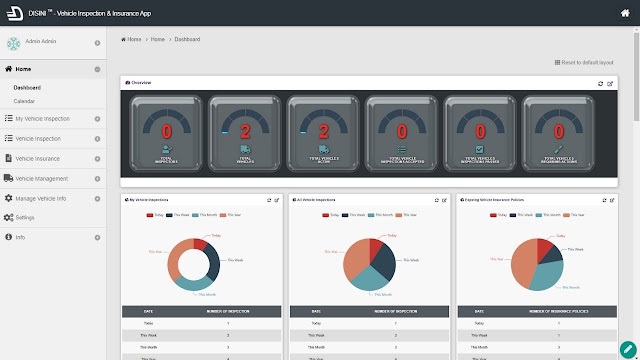Artificial Intelligence in Enterprise Applications with TensorFlow and Joget DX
Joget DX is an open source no-code/low-code application platform that introduces innovative features such as automatic support for progressive web apps (PWA), integrated application performance management (APM) and built-in artificial intelligence (AI) support.
In the previous article A Quick Introduction to Artificial Intelligence, Machine Learning, Deep Learning and TensorFlow, we introduced the concepts behind these terms, and how things generally work. In this article, we’ll have a look at how to incorporate TensorFlow for AI use cases on the Joget platform.
AI and Decision Support Features in Joget DX
The AI focus in Joget DX is to simplify the integration of pre-trained AI models into end user applications. As rationalized in the previous article, the training of AI models are best left to machine learning experts so once a trained model is available, the goal is to make it as accessible as possible to app designers.
With the bundled TensorFlow AI plugin, you essentially:
- Upload a pre-trained TensorFlow model exported in protobuf (.pb) format
- Configure the inputs and outputs
- Configure optional post processing
- Image Classification
- Object Detection
- Face Recognition
- Audio Classification
- Text Sentiment Analysis
Sample No-Code AI Apps on Joget DX
Image Classification
Inception v3 is a widely-used image recognition model that has been shown to attain greater than 78.1% accuracy on the ImageNet dataset. ImageNet is a dataset containing for image classification containing than 14 million labeled images. In the sample app, a simple decision process is designed to demonstrate the use of the TensorFlow AI Decision plugin as shown below:The TensorFlow plugin is then configured by:
- Uploading the pre-trained model in protobuf (.pb) format
- Configuring the image with appropriate dimensions as the input
- Configuring where to store the output result
- Configuring additional post processing to match the output result to a specific label
Download the model from http://download.tensorflow.org/models/inception_v3_2016_08_28.tar.gz. More information on the Inception model can be found at https://towardsdatascience.com/a-simple-guide-to-the-versions-of-the-inception-network-7fc52b863202
Object Detection
SSD MobileNet v1 is a model for object detection trained using the COCO dataset. COCO is a large-scale dataset for object detection that contains 1.5 million object instances. The model can detect and identify multiple objects in a single image, as shown in the image below.The TensorFlow plugin is configured by:
- Uploading the pre-trained model in protobuf (.pb) format
- Configuring the image with appropriate dimensions as the input
- Configuring where to store the output results
- Configuring additional post processing to match the output result to specific labels
Download the model from http://download.tensorflow.org/models/object_detection/ssd_mobilenet_v1_coco_2018_01_28.tar.gz. More information on object detection can be found at https://www.oreilly.com/ideas/object-detection-with-tensorflow
Face Recognition
FaceNet is face recognition model introduced by Google that converts a face image into 128 measurements called an “embedding”. One embedding is then compared to another in order determine whether or not a face matches. This sample is based on the sample at https://github.com/davidsandberg/facenet.
The TensorFlow plugin is configured by:
- Uploading the pre-trained model in protobuf (.pb) format
- Configuring a couple of images with appropriate dimensions as the input
- Configuring where to store the output results
- Configuring additional post processing to compare the “distance” between the embeddings to determine a match
Download the model from https://github.com/davidsandberg/facenet/wiki/Validate-on-lfw. More information on face recognition can be found at https://medium.com/@ageitgey/machine-learning-is-fun-part-4-modern-face-recognition-with-deep-learning-c3cffc121d78
Audio Classification
ResNet stands for residual network, and as the name implies, it utilizes residual learning to preserve good results in neural network layers. ResNet demonstrates good results for image recognition, but also shows promise for audio classification e.g. determining the musical genre for an audio sample. This sample is based on https://github.com/chen0040/java-tensorflow-samples/tree/master/audio-classifier
The TensorFlow plugin is configured by:
- Uploading the pre-trained model in protobuf (.pb) format
- Configuring the audio sample with appropriate dimensions as the input
- Configuring where to store the output result
- Configuring additional post processing to match the output result to a specific label
Download the model from https://github.com/chen0040/java-tensorflow-samples/tree/master/audio-classifier/src/main/resources/tf_models. More information on audio classification can be found at https://medium.com/@CVxTz/audio-classification-a-convolutional-neural-network-approach-b0a4fce8f6c
Text Sentiment Analysis
CNN for Sentence Classification is a model for text classification, for example to determine whether customer feedback is positive or negative. This sample is based on the sample at https://github.com/ivancruzbht/tf_android
The TensorFlow plugin is then configured by:
- Uploading the pre-trained model in protobuf (.pb) format
- Configuring the text with related dictionary as the input
- Configuring where to store the output result
Download the model from https://github.com/ivancruzbht/tf_android/tree/master/app/src/main/assets. More information on text classification can be found at https://medium.com/jatana/report-on-text-classification-using-cnn-rnn-han-f0e887214d5f


This is the first time I came to know about Joget DX and its use in PWA Apps . I will keep following your blogs for more such contents.
ReplyDelete